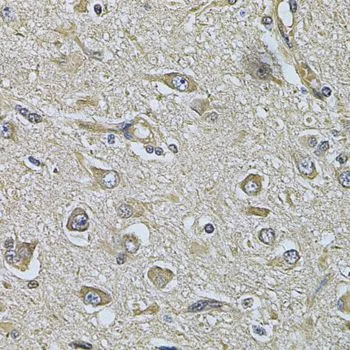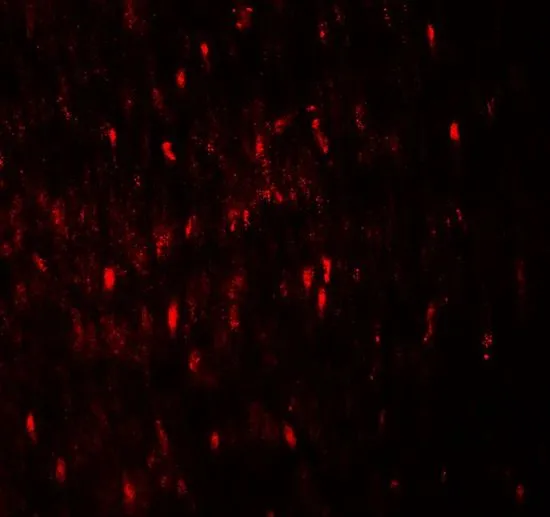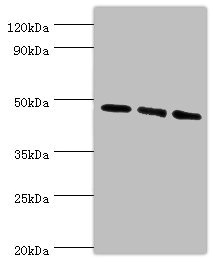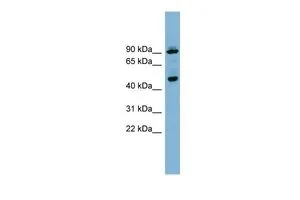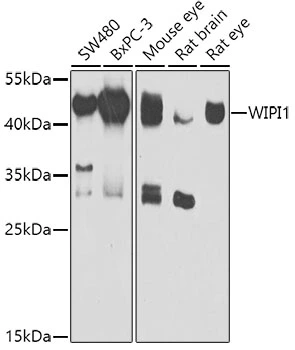
WB analysis of various sample lysates using GTX55842 WIPI1 antibody. The signal was developed with ECL plus-Enhanced. Dilution : 1:1000 Loading : 25microg per lane
WIPI1 antibody
GTX55842
ApplicationsWestern Blot, ImmunoHistoChemistry, ImmunoHistoChemistry Paraffin
Product group Antibodies
TargetWIPI1
Overview
- SupplierGeneTex
- Product NameWIPI1 antibody
- Delivery Days Customer9
- Application Supplier NoteWB: 1:500 - 1:2000. IHC-P: 1:50 - 1:200. *Optimal dilutions/concentrations should be determined by the researcher.Not tested in other applications.
- ApplicationsWestern Blot, ImmunoHistoChemistry, ImmunoHistoChemistry Paraffin
- CertificationResearch Use Only
- ClonalityPolyclonal
- ConjugateUnconjugated
- Gene ID55062
- Target nameWIPI1
- Target descriptionWD repeat domain, phosphoinositide interacting 1
- Target synonymsATG18, ATG18A, WIPI49, WD repeat domain phosphoinositide-interacting protein 1, WIPI-1 alpha, atg18 protein homolog
- HostRabbit
- IsotypeIgG
- Protein IDQ5MNZ9
- Protein NameWD repeat domain phosphoinositide-interacting protein 1
- Scientific DescriptionThis gene encodes a WD40 repeat protein. Members of the WD40 repeat family are key components of many essential biologic functions. They regulate the assembly of multiprotein complexes by presenting a beta-propeller platform for simultaneous and reversible protein-protein interactions. Members of the WIPI subfamily of WD40 repeat proteins have a 7-bladed propeller structure and contain a conserved motif for interaction with phospholipids. Alternative splicing results in multiple transcript variants. [provided by RefSeq, Mar 2016]
- Storage Instruction-20°C or -80°C,2°C to 8°C
- UNSPSC12352203

